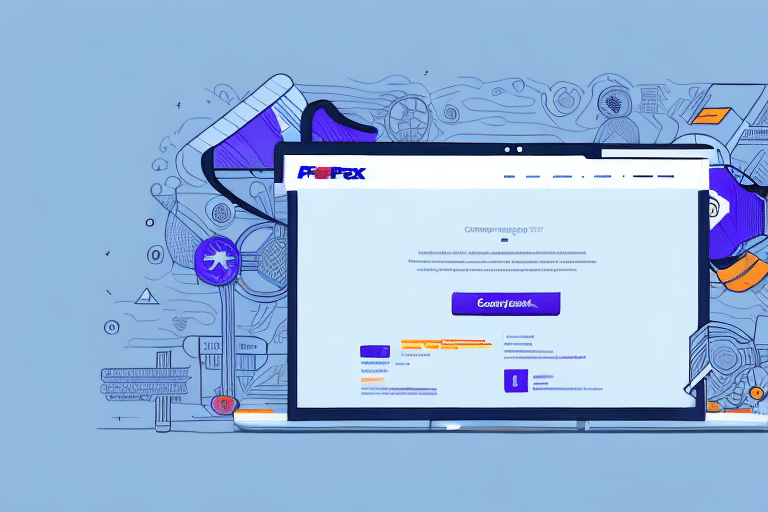How to Update Your FedEx Ship Manager Software
As a business owner, you rely on your FedEx Ship Manager software to keep your shipping operations running smoothly. However, outdated software can cause a variety of problems, from lost packages to decreased efficiency. By keeping your FedEx Ship Manager software up-to-date, you can ensure that your shipments arrive on time and your business runs smoothly. In this article, we provide a step-by-step guide to updating your FedEx Ship Manager software and explain why it is important to do so.
Why It's Important to Keep Your FedEx Ship Manager Software Up-to-Date
Keeping your FedEx Ship Manager software up-to-date is crucial for several reasons:
- Performance Improvements: New updates often contain bug fixes and performance enhancements, leading to faster and more efficient shipping operations.
- Security Enhancements: Outdated software may have security vulnerabilities that can be exploited by hackers, risking data breaches or stolen packages. Updates include the latest security measures to protect your business and customers.
- Compatibility: As technology advances, other software and systems may require updated versions of FedEx Ship Manager to function properly. Staying current avoids compatibility issues and ensures smooth shipping operations.
According to a CSO Online report, businesses that regularly update their software experience 30% fewer security incidents compared to those with outdated systems.
Understanding Different Versions of FedEx Ship Manager Software
FedEx offers several versions of its Ship Manager software, each tailored to different business needs:
- Ship Manager Lite: A web-based solution ideal for small businesses and individual shippers, offering basic shipping functionalities such as label printing and package tracking.
- Ship Manager Server: A client-server-based software designed for larger businesses with multiple users and locations, providing advanced features like batch processing and multi-carrier support.
- Ship Manager API: A set of programming tools that allow businesses to integrate FedEx shipping functionalities into their own software applications.
Each version has specific system requirements. For instance, Ship Manager Lite can be accessed through any modern web browser, whereas Ship Manager Server requires installation on a compatible server operating system such as Windows Server 2016 or later.
Checking for Available Updates
To check for available updates for your FedEx Ship Manager software:
- Log in to your account on the FedEx website.
- Navigate to the "Manage" tab and select "Software and Tools."
- Select your software version and check for available updates.
Regularly checking for updates, ideally once a month, ensures you have access to the latest features and security enhancements.
Downloading and Installing the Latest Version
Follow these steps to download and install the latest version of FedEx Ship Manager software:
- Select the appropriate software version from the list of available updates.
- Click on the download link provided.
- Follow the installation instructions carefully, as provided by FedEx.
Ensure your computer meets the minimum system requirements before proceeding. Requirements typically include:
- Operating System: Windows 10 or later / macOS Catalina or later
- Processor: Intel i5 or equivalent
- Memory: At least 8 GB RAM
- Disk Space: Minimum 500 MB available
Failure to meet these requirements may result in poor software performance or installation issues.
Troubleshooting Common Update Issues
If you encounter problems during the update process, try the following troubleshooting steps:
- Verify System Requirements: Ensure your computer meets the minimum system requirements.
- Restart Your Computer: Sometimes a simple restart can resolve installation issues.
- Check Internet Connection: A stable and fast internet connection is necessary for downloading updates.
- Free Up Disk Space: Ensure you have sufficient storage space for the update.
If issues persist, contact FedEx customer support for assistance.
Configuring and Testing Your Updated Software
After updating, configure your FedEx Ship Manager settings to optimize your shipping operations:
- Shipping Preferences: Set default shipping options, such as preferred carriers and services.
- Printer and Scale Configuration: Connect and configure your shipping label printers and scales.
- Address Book: Save frequently used shipping addresses for quicker processing.
Once configured, test the software by:
- Printing Test Labels: Ensure label printers are functioning correctly.
- Verifying Tracking Information: Confirm that package tracking updates accurately.
- Running Sample Shipments: Conduct test shipments to validate the entire process.
Maintaining Your FedEx Ship Manager Software Post-Update
To ensure ongoing performance and security:
- Regular Updates: Continue to check and install updates as they become available.
- Monitor Performance: Keep an eye on software performance and address any issues promptly.
- Integrate with Other Tools: Utilize FedEx's Web Services API to automate tasks like label printing and tracking.
By maintaining your software diligently, you can prevent potential issues and keep your shipping operations running smoothly.
Benefits of Using the Latest Version of FedEx Ship Manager Software
Upgrading to the latest version of FedEx Ship Manager offers numerous advantages:
- Increased Efficiency: Enhanced features streamline shipping processes, reducing time and effort.
- Improved Accuracy: Better data management ensures more reliable shipping information.
- Enhanced Security: Latest security updates protect against data breaches and cyber threats.
- Competitive Edge: Access to the newest technologies and features helps your business stay ahead.
Additionally, real-time tracking capabilities allow you to monitor shipments accurately, providing customers with reliable delivery estimates and improving their overall experience.
In summary, keeping your FedEx Ship Manager software up-to-date is essential for optimizing your shipping operations, ensuring security, and maintaining competitiveness in the market. Follow the steps outlined in this guide to update your software effectively and reap the benefits of the latest enhancements.






















